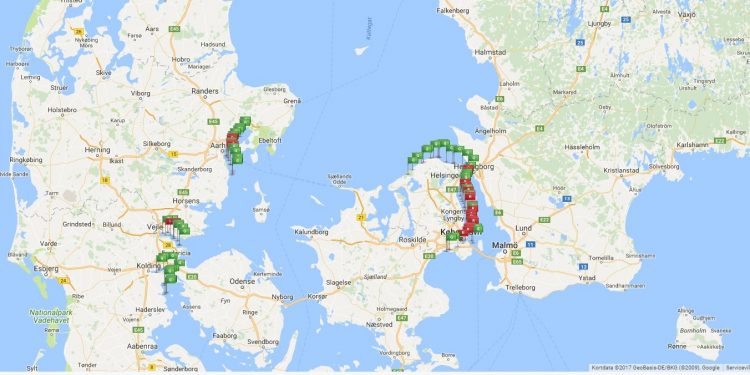Going swimming? – Check the bathing water after heavy rain
After the heavy rain you may be asking yourself about the quality of the bathing water in or near the larger cities. Certainly, with the large amount of extra rainwater – how does the sewage system cope – and where does the water go, into the sea? So, can you bathe or not?
The article continues below.
By Bente D. Knudsen
Denmark is very proud of the general quality of its surrounding water, and that you can bathe in the midst of the city in the harbour baths or from the nearby beaches – quite safely.
However, when the weather says heavy or torrential rain, you may rightfully ask yourself – where does all the excess water go?
Despite efforts to build extra overflow areas on land – where the excess rainwater can flow instead of into the streets and peoples’ cellars, a certain amount still goes through an overloaded sewage system and ends in the sea.
The article continues below
This is the case for Copenhagen city, and the larger cities north of Copenhagen, as well as Aarhus and surrounding suburbs.
This only happens in extreme cases when torrential rain hits Denmark hard as was the case the past 48 hours.
For this reason, an extensive warning system has been put in place, to warn bathers of overflow and dangers of bathing just after, and up to 24 hours after, the overflow incident.
If you are an eager bather in the summer? – you can subscribe to the system and get a text message on your phone when it happens.
If you just want to check yourself before going to the beach in vain (if it is a beach with lifeguards they of course will know and put up warning sign), you can easily check your preferred beach on the site badevand.dk.
Here a map of Denmark with flags is shown for all beaches at risk of being contaminated by overflow. A red flag indicates that it is not safe to bathe, whereas a green says go ahead.
If you click on the flag and beach, a four-day prognosis will appear, so that you can plan your beach trip ahead of time.
The article continues below.
For instance today, the beaches of Charlottenlund Fort, north of Copenhagen all have a red flag at present.
The prognosis is made based on an extensive computer based model that takes into account the overflow information with the currents and water flows in the sea or harbour to be able to predict the contamination situation ( E-Colli bacteria for instance).
Also, the date and hour of the overflow, and beach on which it occurred is indicated. A rule of thumb is to let 24 hours pass.
Safe bathing!
Support our magazine with a contribution of any size
We do not want to put up a pay-wall, so we need your support and if you find our content relevant and worthwhile, we would value any contribution, however big or small, as a token of your appreciation of our efforts.
How to support:
Transfer any contribution to our bank account at: Your Danish Life/ Danish Expat Media Aps
Danske Bank Account number: 3409 11405673
IBAN: DK68 3000 0011 4056 73
or MobilePay to 2144 1224
Message: Support


